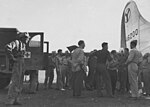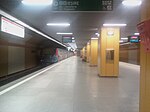Popești-Leordeni
Bulgarian communities in RomaniaLocalities in MunteniaPopulated places in Ilfov CountyTowns in Romania

Popești-Leordeni (Romanian pronunciation: [poˌpeʃtʲ le.orˈdenʲ]) is a town in Ilfov County, Muntenia, Romania, 9 km (5.6 mi) south of downtown Bucharest, although from the northern edge of the town to the southern edge of Bucharest the distance is less than 100 m (330 ft). Most of its inhabitants commute to Bucharest, with Popești-Leordeni being seen as a satellite town of the Romanian capital.
Excerpt from the Wikipedia article Popești-Leordeni (License: CC BY-SA 3.0, Authors, Images).Popești-Leordeni
Strada 1 Mai,
Geographical coordinates (GPS) Address Nearby Places Show on map
Geographical coordinates (GPS)
| Latitude | Longitude |
|---|---|
| N 44.38 ° | E 26.17 ° |
Address
Strada 1 Mai
Strada 1 Mai
077160
Romania
Open on Google Maps










